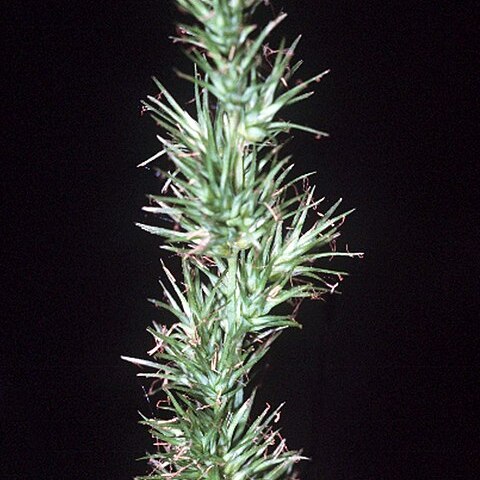Stems very stout, densely clustered, 4–8 dm, sharply triangular and narrowly winged, shorter than the lvs; main lvs 5–10 mm wide; sheaths thin and truncate at the mouth, not corrugated; infl ovoid to cylindric, 8–18 cm, the lower branches ± separate, to 5 cm, the upper shorter and contiguous; scales triangular-ovate, equaling or shorter than the body of the perigynium; perigynia divaricate, 5.6–8.2 mm, dilated at base into a suborbicular spongy disk 1.5–2.5 mm wide, the body ovate, planoconvex, narrower than the disk, sharply nerved dorsally, obscurely nerved or nerveless ventrally, the beak much longer than the body, deeply bidentate. Swampy woods and meadows throughout the Gulf states and n. in the interior to Ind., s. Ont., s. Mich., and s. Minn. (C. bayardii Fernald, a form with the perigynium-base scarcely nerved)

